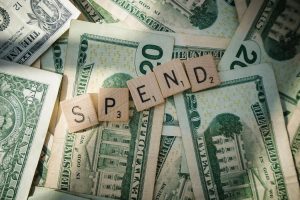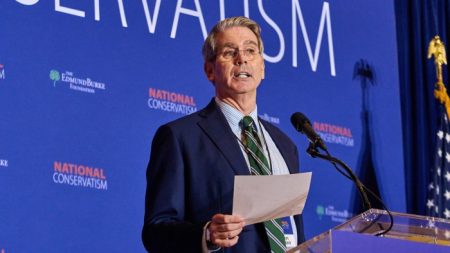American shoppers continue to power the US economy.
Spending at US retailers climbed 0.4% in September from the prior month, according to fresh government data released Thursday. That was much stronger than August’s 0.1% gain and was in line with what economists projected in a FactSet poll.
Wall Street cheered the American economy’s latest show of strength with the Dow rising more than 145 points at market open as other major stock indexes saw gains in early morning trading. Separate data from the Labor Department showed that new applications for unemployment benefits fell by 19,000 last week, the steepest weekly decline since June 2023.
Retail sales were up across most categories last month, rising the most at specialty stores (+4%), clothing stores (+1.5%) and at health and personal care shops (+1.1%). Sales at bars and restaurants rose 1% last month. The figures are adjusted for seasonal swings but not inflation.
Meanwhile, spending at gas stations fell 1.6% in September, which was due to lower gas prices. Excluding those sales, retail spending was up a much stronger 0.6%. Sales of electronics and appliances declined the most in September, plunging 3.3% from August.
Consumer spending makes up about 70% of the US economy, with retail sales comprising a sizable chunk of that. Thursday’s report shows that Americans are still opening their wallets despite years of elevated inflation and interest rates that have only recently begun to come down from a bruising two-decade high.
The latest figures on retail spending represent another reassuring sign that America’s economy is nowhere near a recession. The Federal Reserve delivered a bold half-point rate cut last month, the first time the central bank has lowered interest rates in more than four years. Fed Chair Jerome Powell said the decision was in part to prevent the US job market from faltering.
Fed officials have made it clear they don’t want to inflict unnecessary economic pain on Americans with high interest rates, which have been meant to tamp down inflation. Now that price pressures have mostly come under control, the Fed has turned its primary focus to methodically lowering rates to ease their grip on the economy.
That’s key because the central bank is also tasked by Congress to promote maximum employment, the other part of its so-called dual mandate. Before the Fed’s big half-point rate cut last month, there were fears among some investors that the US labor market was beginning to deteriorate. However, the September jobs, released earlier this month, showed that’s not the case. Job growth last month was much stronger than economists had forecast, and instead of holding steady as expected, the unemployment rate edged lower.
So, not only does the job market remain in good shape, but consumer spending — a key driver of the US economy — also remains healthy. That could affect the Fed’s plan on future rate cuts.
“The stronger-than-forecast retail sales adds to rising doubt on whether the Fed lowers (interest rates by a quarter point) next month and follows up with another (quarter point) in December,” Kathy Bostjancic, chief economist at Nationwide, wrote in a analyst note Thursday. “That said, monetary policy is still restrictive as interest rate sensitive sectors such as housing and auto continue to struggle, and we still see the overall trend for inflation remaining downward.”
Investors are still pricing in a strong chance that the Fed will cut rates by a quarter point next month when officials convene for their policy meeting on November 6-7, according to futures.
Read the full article here













